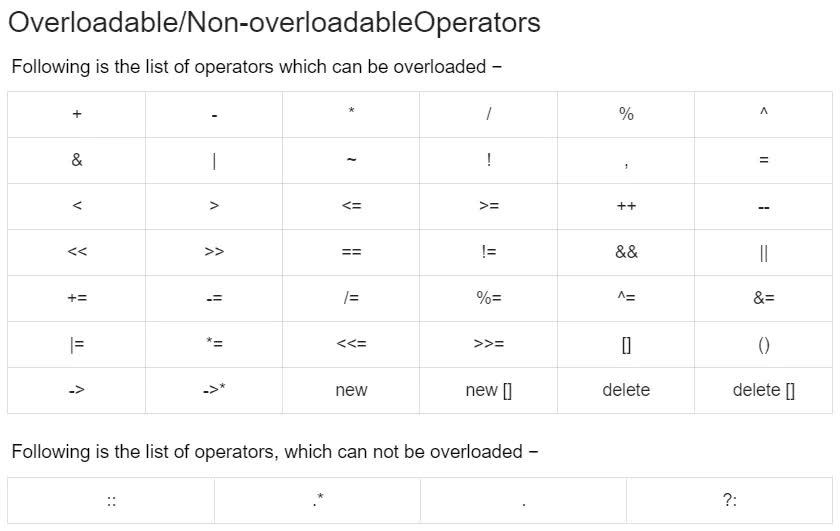new operator
当我们使用了new关键字去创建一个对象时,你知道背后做了哪些事情吗?
A* a = new A;
实际上这样简单的一行语句, 背后做了以下三件事情:
- 分配内存,如果类A重载了operator new,那么将调用A::operator new(size_t )来完成,如果没有重载,就调用::operator new(size_t ),即全局new操作符来完成
- 调用构造函数生成类对象;
- 返回相应指针。
下面我们通过一个例子来验证这个过程:
#include <iostream>
#include <string>
#include <malloc.h>
using namespace std;//student class
class Stu
{
public:Stu(string name, int age){cout << "call Stu class constructor" << endl; name_ = name;age_ = age;};
public:void print() const{cout << "name = " << name_ << std::endl;cout<< "age = " << age_ << std::endl;};void* operator new(size_t size){std::cout << "call operator new" << std::endl;return malloc(size);}
private:string name_;int age_;
};
int main()
{Stu* stu1 = new Stu("a", 10);
}
在上述代码中,我们重载了Stu类的operator new操作符,用来验证上述的结论。
上述代码的执行结果如下所示:
call operator new
call Stu class constructor
可以看到重载的operator new被调用,类Stu的构造函数也被调用,验证了上述的描述。
要注意到的是new是一个关键字,和sizeof一样,我们不能修改其具体功能。
operator new
从new的调用过程中,我们知道会调用operator new操作符
那么operator new又是什么呢?
C++支持运算符的重载,支持对一些运算符自定义其行为:

operator new是一个操作符,和+ -操作符一样,作用是分配空间。我们可以重写它们,修改分配空间的方式。
operator new返回值必须是void*。第一个参数必须是size_t
void* operator new (std::size_t size) throw (std::bad_alloc);
void* operator new (std::size_t size, const std::nothrow_t& nothrow_constant) throw();
在下面的例子中,我们使用重载了三个operator new方法, 并分别调用。
#include <iostream>
#include <string>
#include <malloc.h>
using namespace std;//student class
class Stu
{
public:Stu(string name, int age){cout << "call Stu class constructor" << endl; name_ = name;age_ = age;};
public:void print() const{cout << "name = " << name_ << std::endl;cout<< "age = " << age_ << std::endl;};void* operator new(size_t size){std::cout << "call operator new" << std::endl;return malloc(size);}void* operator new(size_t size, int num){std::cout << "call operator new with int" << std::endl;return malloc(size);} void* operator new(size_t size, char c){std::cout << "call operator new with char" << std::endl;return malloc(size);}
private:string name_;int age_;
};
int main()
{Stu* stu1 = new Stu("a", 10);Stu* stu2 = new(1) Stu("a", 10);Stu* stu3 = new('c') Stu("a", 10);
}
执行结果如下:
call operator new
call Stu class constructor
call operator new with int
call Stu class constructor
call operator new with char
call Stu class constructor
placement new
placement new是operator new的一种重载形式,其作用是可以在指定的内存地址创建对象。
placement new返回值必须是void*。第一个参数必须是size_t, 第二个参数是void*
void* operator new (std::size_t size, void* ptr) throw();
下面的是一个关于placement new的调用例子:
#include <iostream>
#include <string>
#include <malloc.h>
using namespace std;//student class
class Stu
{
public:Stu(string name, int age){name_ = name;age_ = age;};
public:void print() const{cout << "name = " << name_ << std::endl;cout<< "age = " << age_ << std::endl;};void* operator new(size_t size, void* p){std::cout << "placement new" << std::endl;return p;};
private:string name_;int age_;
};
int main()
{void* stu1 = (Stu*)malloc(sizeof(Stu));new (stu1) Stu("stu1", 10);((Stu*)stu1)->print();
}
执行结果如下:
placement new
name = stu1
age = 10
由于placement new可以在一个指定的位置创建对象,因此在STL中有很广泛的运用, 例子vector容器初始化的时候,会使用allocator申请一定的内存,当使用push_back放入对象时, 就可以使用placement new在申请的位置创建对象。
这里以MyTinySTL中创建对象的函数为例,construct.h, 可以看出construct函数就是使用了全局的placement new方法在指定地址创建对象。
template <class Ty, class... Args>
void construct(Ty* ptr, Args&&... args)
{::new ((void*)ptr) Ty(mystl::forward<Args>(args)...);
}
结论
对于new, operator new 和 placement new三者的区别, 我们总结如下:
new:
new是一个关键字,不能被重载。
new 操作符的执行过程如下:
- 调用operator new分配内存 ;
- 调用构造函数生成类对象;
- 返回相应指针。
operator new:
operator new就像operator + 一样,是可以重载的。如果类中没有重载operator new,那么调用的就是全局的::operator new来完成堆的分配。同理,operator new[]、operator delete、operator delete[]也是可以重载的。
placement new:
placement new和operator new并没有本质区别。它们都是operator new操作符的重载,只是参数不相同。
placement并不分配内存,只是返回指向已经分配好的某段内存的一个指针。因此不能删除它,但需要调用对象的析构函数。
如果你想在已经分配的内存中创建一个对象,使用new时行不通的。也就是说placement new允许你在一个已经分配好的内存中(栈或者堆中)构造一个新的对象。原型中void* p实际上就是指向一个已经分配好的内存缓冲区的的首地址。



